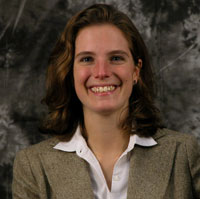Diabetes Not the Same for All (web article)
Middle-Age and Elderly Onset Diabetes May Require Different Treatment Goals

Elderly persons who were diagnosed with diabetes during middle age (40-64 years) and those diagnosed later in life (over 65 years) comprise two distinct groups, according to new research from the Johns Hopkins Bloomberg School of Public Health. The study, published in the November 2006 issue of Diabetes Care, found that these two age groups have different disease burdens and may require different treatment goals.
“The number of individuals aged 65 or older in the U.S. is increasing markedly and diabetes is a growing problem in this population. In addition, people are living to much older ages with high quality of life, which speaks to the need for more aggressive treatment among elderly persons with diabetes,” said Elizabeth Selvin, PhD, MPH, lead author of the study and a postdoctoral fellow in the Bloomberg School of Public Health’s Department of Epidemiology.
The study authors analyzed 1999-2002 data for 2,809 elderly persons in order to present a nationally representative estimate of the prevalence of diabetes among elderly persons in the general U.S. population. The data were taken from the National Health and Nutrition Examination Survey (NHANES), an on-going cross-sectional survey of the civilian, non-institutionalized U.S. population.
The authors report that 15 percent of the U.S. population aged 65 years or older, had been diagnosed with diabetes, a figure that represents approximately 5.4 million individuals. In addition, 6.9 percent of the U.S. population aged 65 years or older (2.4 million individuals) have undiagnosed diabetes and are unaware of their condition.
Elderly persons with middle-age-onset diabetes were more likely to have retinopathy, reflecting the cumulative damage of high glucose levels over the course of many years. They also had much worse glycemic control. In contrast, elderly persons with newly diagnosed diabetes had a comparable burden of cardiovascular disease but required less aggressive treatment to reach blood pressure and cholesterol treatment goals.
“The two types of elderly persons with diabetes have distinct characteristics, including different burdens of disease,” said Selvin. “Elderly people with diabetes are a heterogeneous group and doctors may need to consider different treatment goals for these two groups in clinical practice.”
“The Burden and Treatment of Diabetes in Elderly Individuals in the U.S.” was co-authored by Elizabeth Selvin, Josef Coresh and Frederick L. Brancati.
Elisabeth Selvin was supported by a grant from the National Heart, Lung, and Blood Institute.
Public Affairs media contacts for the Johns Hopkins Bloomberg School of Public Health: Kenna Lowe or Tim Parsons at 410-955-6878 or paffairs@jhsph.edu.